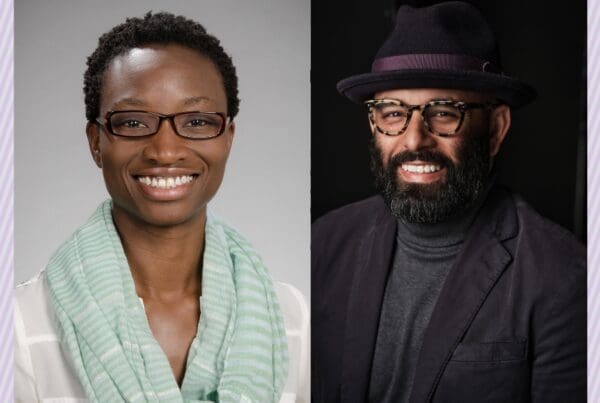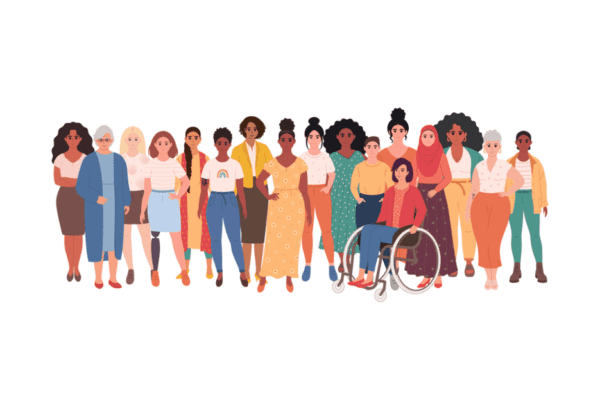Highlights | New blueprint and website, same mission
- The Office of Healthcare Equity has launched a new blueprint and website.
- Goals in blueprint 2.0 focus on six areas: leadership and strategic operations; workforce development; community engagement; research and evaluation; quality improvement; and learning environments.
- The new OHCE website shares info about their programs and team and offers resources for employees.
The team at the Office of Healthcare Equity (OHCE) has been busy since the office’s founding in July 2020. So busy that they have already accomplished many of their initial goals and are now embarking on new projects, including an updated healthcare equity blueprint and a new website.
A website full of resources
The new website outlines OHCE’s programs, shares information about their team and their work, and lists employee resources including links to the Bias Reporting Tool and a helpful glossary of EDI-related terms.
“We are very excited about our new website. Not only does our website share information regarding work within the OHCE and our partners, we are working toward a community engagement page that will include a calendar of EDI events not only within UW Medicine but in the community as well,” says Priscilla Estrada, community and workforce engagement specialist for OHCE. “Our website will be ever-evolving and updated as our EDI work continues.”
Building up from the first blueprint
The first healthcare equity blueprint, launched in 2017, had three main objectives: increasing diversity and cultural humility while reducing bias; engaging with local communities; and meeting the needs of marginalized groups by implementing quality improvement and healthcare services.
“We are excited to present the Healthcare Equity Blueprint 2.0 strategic plan to build upon the accomplishments from the original blueprint,” says Paula Houston, EdD., chief equity officer for OHCE. “We look forward to working with leaders across UW Medicine as we strive to realize our vision of healthcare equity and ultimately health justice for those we serve.
The new blueprint 2.0 outlines six areas where the team will devote most of their focus for the next year: leadership and strategic operations; workforce development; community engagement; research and evaluation; quality improvement; and learning environments.
Here is an overview of the team’s goals in each of those six areas:
Leadership and strategic operations
This goal involves building a robust internal communications system and partnering with Strategic Marketing & Communications, Advancement, Government Relations and other intraorganizational partners to help support OHCE’s work and mission. It also involves holding regular events to showcase local, regional and national leaders in equity, diversity and inclusion (EDI) and discuss local legislation.
Workforce development
It’s no secret that our workforce isn’t as diverse, equitable or inclusive as it could be. To change that, the team at OHCE plan on working to recruit and retain more Black, Indigenous and People of Color (BIPOC) students, trainees, staff, and faculty and ensure the hiring process is free from bias. Part of retaining employees from marginalized groups is about making sure they feel heard and supported and can connect with colleagues from similar backgrounds and life experiences, which is why affinity groups for Black, Asian American and Pacific Islander (AAPI), LatinX and LGBTQ+ colleagues are a priority, as well as building a white anti-racist group. Another priority is offering EDI education and coaching to current employees and helping employees who are interested become advocates in their own teams for EDI work.
Community engagement
Before you can help a community, you need to understand their needs and wants. This is why the OHCE team is focused on listening to local communities that they serve and getting their feedback to build stronger, lasting partnerships. Building a foundation of trust through outreach, standing in solidarity with the community’s goals and responding in times of crisis are also key to this goal.
Research and evaluation
The team has launched the Justice, Equity, Diversity and Inclusion (JEDI) Center for Transformational Research — a cool name (shoutout to all the Star Wars fans) for a vital research center that will study health disparities to better understand and then eliminate them. The center will also focus on offering more opportunities for underrepresented researchers and building collaborations with basic scientists, clinical scientists and BIPOC communities.
“We are excited that with the support of our community and funders, the UW JEDI Center is poised to start a new phase of health equity research,” says Bessie Young, MD, MPH, professor of Nephrology as well as medical director and associate dean for Healthcare Equity.
Quality improvement
This goal focuses on making sure that all quality improvement efforts across UW Medicine follow EDI principles and are aligned with OHCE’s work. (And yes, this improves patient care.) This includes understanding barriers to patient access and fixing them, making sure patients have the resources they need (such as translators), and ensuring all patients are treated with dignity and respect. The Transgender and Gender Non-binary Health Program, which works to improve the quality of gender-affirming care, is a big part of this work.
Learning environments
People can only work toward equity if they understand inequities that exist and how to counter them. That’s why training for faculty, students, trainees and staff is so important. The goal is to make sure all employees are educated about EDI issues by creating an educational environment that is inclusive of all people. OCHE is partnering with Student Affairs to revamp the medical student curriculum to include education on EDI issues students will face as new physicians. In addition, the Center for Workforce Inclusion and Healthcare System Equity, under the leadership of Estell Williams, MD, a general surgeon, works to bring more students from underrepresented backgrounds into our clinical departments and within the School of Medicine through programs such as Doctor For A Day and Summer Health Professions Education Program.
“Blueprint 2.0 will allow us to continue our EDI work, built on the foundation established by the original blueprint in our transformation to becoming an anti-racist organization,” says Young.
Photo caption: Paula Houston, EdD., chief equity officer, and Bessie Young, MD, MPH, medical director and associate dean for Healthcare Equity.


